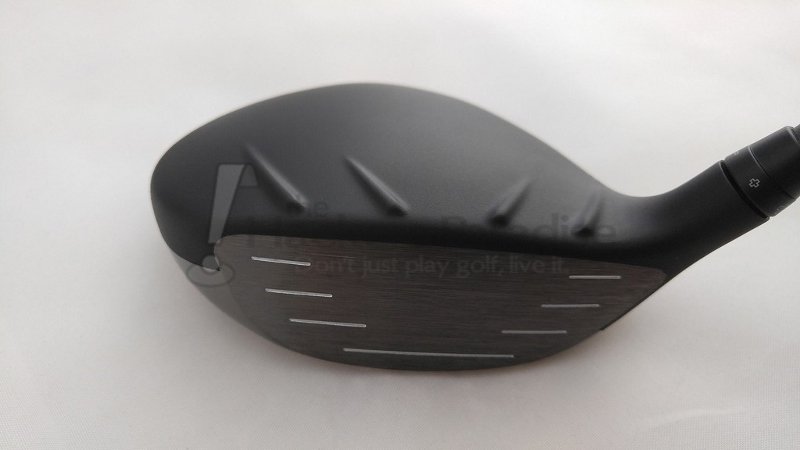PING G Stretch Review
Introduced as a lower spinning, lower launching, weight forward, turbulator boasting strong 3 wood to the market, the PING G Stretch has all the build elements of a fairway finding, wind repelling driver replacement. But can this slightly slimmer (from crown to sole) 13 degree wood provide more than just big distance off a tee, with the added benefits of forgiveness following close behind?
From PING
This design is custom-engineered to stretch your distance off the tee and on shots into the green with its larger head, slightly forward CG, 13° loft, and reduced spin. The lead edge is lower to the ground, making it easy to get the ball in the air as impact occurs higher on the face. Also key to performance: an innovative cascading internal sole that pools stress at impact so the entire face is engaged in flexing to deliver maximum energy for faster ball speeds and big distance.
Discretionary weight from thinning the crown was used to lower the CG, increase forgiveness, and make it easy to get the ball airborne, even when struck low on the face. Carpenter 455 steel has a high strength-to-weight ratio, allowing for a thinner, variable-thickness machined face that increases flexing for fast ball speeds, high launch and greater distance. A unique process adds friction to the face to reduce spin.
Initial Thoughts
Despite sharing a similar profile to the standard G fairway, the G Stretch boasts a more centralized sole weight, slightly larger head (184cc), and an aggressive 13 degrees of loft that can be altered as low as 12 degrees, and as high as 14 degrees. The familiar turbulators sit atop the crown that continues the matte black trend on PING G woods over the last couple releases. Despite the intent of gaining distance with the G Stretch, PING did not get overzealous with the total length, maintaining the 43 inches already seen in their G 14.5 degree fairway. In total, the package blends quite well with their other G offerings, despite these subtle changes.
The Technology
Thinner Crown – Weight saved by thinning the crown was used to lower the CG, increase MOI and make it easy to get the ball in the air, even when struck low on the face. Turbulators capture the ball and can aid in alignment.
The first and most obvious element of the crown is the turbulators, a conveniently eye catching element that not only frames the ball well, but is suggested to improve the ability for the club head to fly through the air. The total profile of the G Stretch being as ‘shallow’ as it is for a low lofted wood bring limited surprise to the notion that strikes lower than center are still introducing decent, albeit lower, launching results. There is an obvious ideal location right around the center height of the face, with feedback being somewhat intriguing as the ball creeps upwards towards the crown. During testing, looks down at the head to double check for the dreaded skymark were met with a clean head, but that contact sensation activates a bit lower than what is preferred.
Lower Lead Edge – Getting the ball airborne is easy with a lower lead edge that slides the face under the ball so impact occurs higher on the face (12% higher than G30 fairway woods).
Despite the aggressive lofting of the G Stretch, the ease of getting the ball competitively airborne from the fairway came quite easy. While some of the deeper fairways at this loft tend to be best when utilized from a teed lie, the G Stretch can accommodate most if not all fairway lies where the ball is neutral with the ground. During testing, the ball could be worked left and right as well as marginal loft changes without a tee, which helps to lean the conversation more towards a fully functional tee and fairway experience.
Tiered Internal Sole – A cascading structure relieves stress at impact by pooling it so the entire face is engaged in flexing. Maximum energy transfer means fast ball speeds and big distance.
Carpenter 455 Face – More than twice as strong as cast 17-4 stainless, Carpenter 455 steel allows for a thinner, variable-thickness, precision-machined face that increases flexing for fast ball speeds, high launch and greater distance. A unique process adds roughness to the face to reduce spin.
It is quite difficult to quantify these subtle design elements without having a comparable fairway with the particular face and internal sole, however there were a couple of experiences worth noting while testing the G Stretch. First, in reference to the fully engaged face, on course experiences would suggest that a great deal of the distance is retained across the face on even the more mediocre strike locations, with a very predictable flight being generated because of it.
Secondary to that, the Carpenter face produces a fairly substantial contact sound, in one of the more audible fairways on the market today. This is not something overly obnoxious or quality deterring, just very sharp for golfers who are seeking an openly audible reference to contact quality.
The Complete Experience
In an overly generalizing explanation, testing provided the expectations of a lower lofted fairway wood that cuts through the air in a very penetrating fashion, paired with the stock Alta shaft. The launch profile does seem to be limited to that of a mid-launch at most, with the potential to increase or decrease as shafts are changed. The difference in degrees between off the fairway strikes and off the tee strikes are not all that substantial, however teeing the ball higher and pursuing a higher flight can be achieved. This fairway will be an excellent option for players who are seeking added distance without the primary goal of introducing launch into their wood game.
Parting Thoughts
As a compliment to the G Series fairway lineup, the G Stretch will take the golfer further down the fairway with less spin, and slightly less launch. The profile promotes alignment confidence with the turbulators and matte finish, and the sound will make it very clear that a G Stretch was struck (and struck well!). For more information on the PING G Stretch, visit www.Ping.com.


















Great review Dan. Lots of information in here. This is an intriguing club for a tee option. For someone who,struggles with low lofted woods off the deck the low leading edge that gets under the ball interests me.
Nice review Dan! Never really been a fan of Ping but if the lower leading edge helps me get the ball airborne I guess I’ll have to give it a try!
The Stretch is an intriguing option. I’ll be putting it up against a regular G 3 wood to see which one works best, all around, for my needs.
Great review. Always on the lookout for the best golf equipment and your blog never disappoints. Thanks Dan!
I am happy to read your article.
Thanks for share the article.
I look forward to your next post.